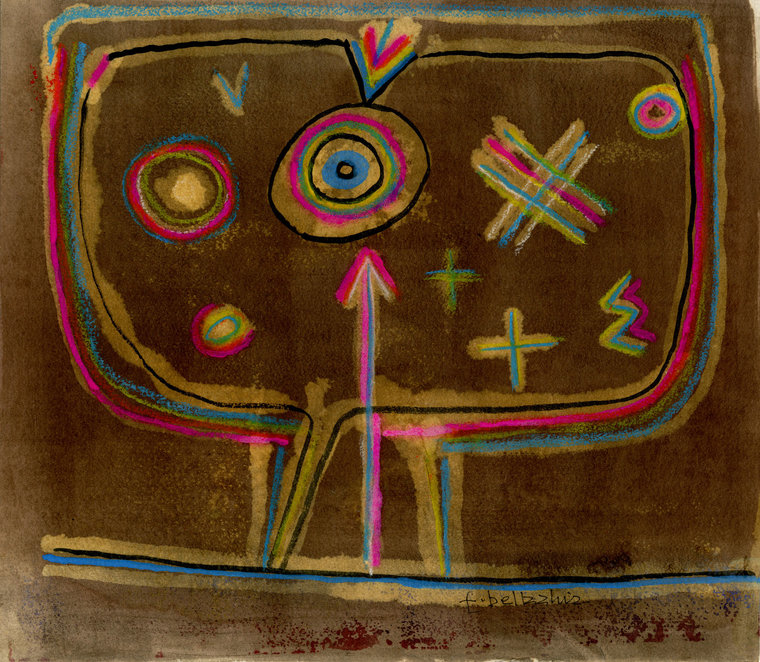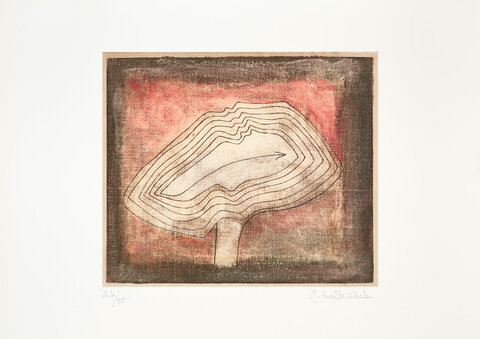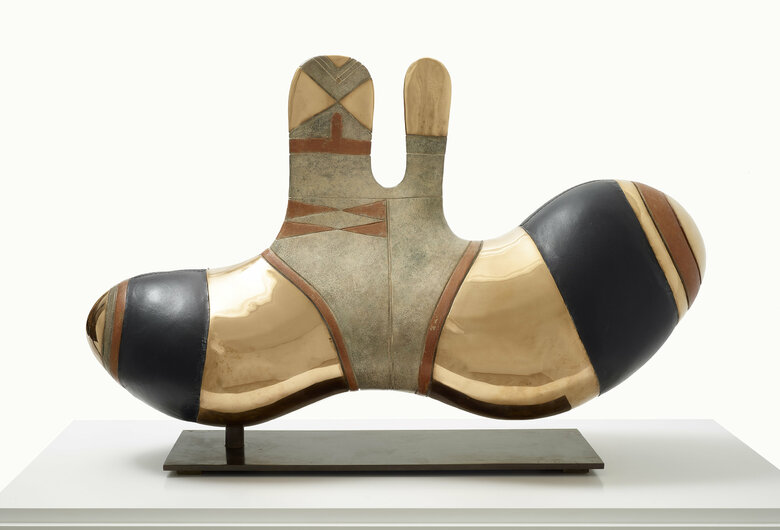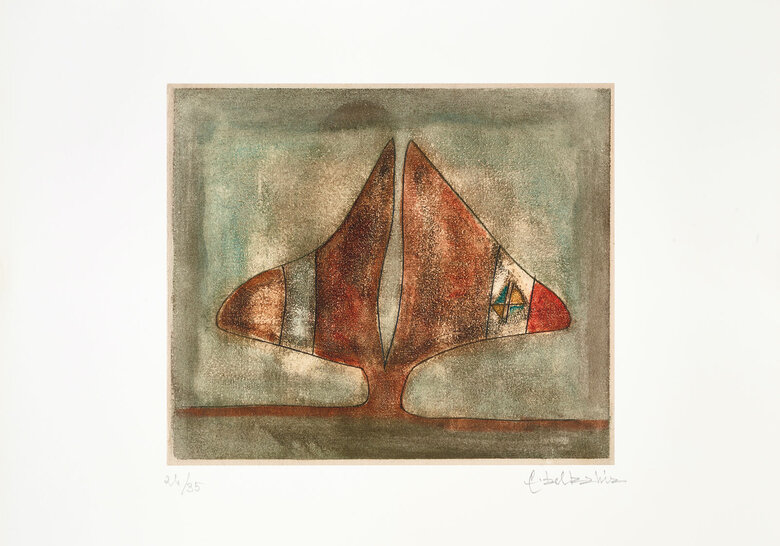Farid Belkahia created this series of seven digital prints, titled L'Arbre À Palabres (The Palaver Tree), based on seven original works of pigmented pastel on paper. The prints were inspired by an eponymous poem by Syrian poet Adonis (L’arbre est un poème écrit par la nature). In his prints, Belkahia approaches the relationship between the symbolism of trees and humanity from an experimental and playful perspective.
Belkahia's fascination with trees extended beyond their physicality to their representational significance. Influenced by African cultural roots, he named this series after the Palaver tree, traditionally a site for communal gatherings and storytelling. Inspired by an Atlas pistachio tree on his Marrakech property in 1973, he began planting and sketching hundreds of trees. In 1993, he curated his first tree-focused exhibition in Casablanca, which featured a fig tree that visitors tied ribbons to with wishes, thus transforming the space into a realm of imagination. Through this exploration, Belkahia developed new geometric motifs, such as triangular, cross-shaped, and circular forms, which he incorporated into the compositions of this series.
Each rectangular print in this collection originates from an artwork combining pastel and watercolor. It was later giclée printed on 290g bamboo Hahnemühle paper. Framed by a grey border, each print features a simplified abstract tree rendered in various shapes – rounded square, triangle, curved line, or circle. Thin viscose pigments and paints, often applied dry, are worked over with a lintless cloth to scrub away layers, revealing underlying paint or raw canvas. This technique creates a textured and worn effect akin to rust, thus enhancing the tactile quality of the work. Ink pens in black, red, or blue outline the trees and depict arrows, adding lines that swirl and spiral in organic, curved forms.
Through printmaking, Belkahia sought to play with the printed nature of modern poetry visually. He worked to combine text and image in collaboration with poet friends such as Etel Adnan (Lebanese), Natasha Pavel (Russian-Armenian), and Adonis (Syrian). Adonis’ poem L'Arbre À Palabres, which accompanies and inspires this series of prints, narrates the myths and stories of different types of trees, reflecting on their wisdom, majesty, and beauty.
“The tree is a story: it is born, it grows, it ages, it dies, it transforms.
The death of the tree is like its life,
A poem was written by nature."
Belkahia's exploration of local artistic traditions extended to experimenting with henna, tattoos, tanning, jewelry, and pottery. His ventures into printmaking fit into his broader oeuvre of experimental, tactile art and decolonial practices meant to make art more accessible to a larger Moroccan audience.
Signed in English on the lower left front



-FaridBelkahia-Front-(1).jpg)
-FaridBelkahia-Front-(1).jpg)
-Detail.jpg)
-Detail.jpg)
.jpg)
.jpg)







